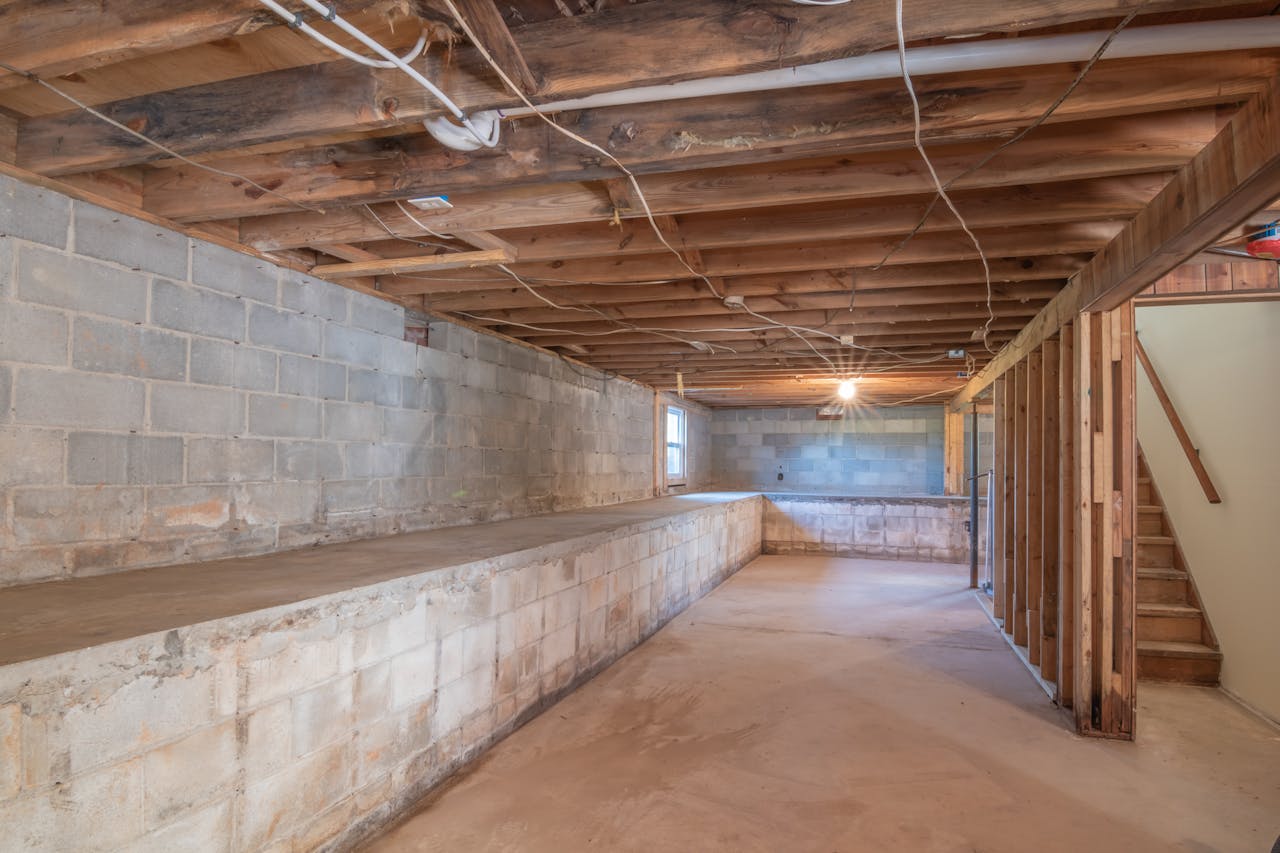Your unseen and sometimes neglected basement can be a source of significant issues if moisture infiltrates. Ignoring the early signs of a wet basement can lead to a multitude of issues, from musty odors to structural damage and the growth of unhealthy mold. All of which can result in decreasing your property’s overall value. Identifying early warning signs is the first crucial step in protecting your home and ensuring a dry, healthy living environment.
At Above Board we understand the challenges that homeowners face with basement moisture. We’ve seen firsthand the damage that can happen when issues are left unaddressed. Our guide will walk you through the key indicators of a damp basement and effective solutions. However, if you would like to talk to a professional, contact us today.
While it might sound obvious, one of the most immediately noticeable signs of a wet basement is the presence of water! This includes puddles on the floor after a heavy rain to standing water. Homeowners should pay attention to areas where the floor meets the walls, as this is a common entry point for water getting inside homes. Even if standing water isn’t apparent, consistently damp spots or a consistently wet floor can be clear indicators of a moisture problem that requires immediate attention.
Something that usually comes with visible water is a pervasive musty or moldy odor. This smell is a sign of mold and mildew growth, which tend to flourish in damp environments. Rather than ignoring the odor or dismissing it as an unpleasant nuisance, homeowners should instead be aware that this smell can indicate the existence of biological contaminants that can impact indoor air quality and health negatively. Above Board specializes in mold remediation and can effectively address mold growth resulting from basement moisture.
In addition to what can be seen or smelt, it’s important to consider the general feel of the basement. If the air constantly feels damp or humid, even if outdoors it’s dry, this elevated humidity level can suggest that moisture is present and evaporating into the air. This over time can cause mold growth and the deterioration of items, making it essential to recognize.
Another key indicator can be the appearance of your basement walls and floors. Homeowners should carefully examine surfaces for several telltale signs. Signs such as water stains or discoloration – which can appear as dark streaks or patches – indicates past instances of water intrusion. Another sign is efflorescence, which is a white, powdery mineral deposit that forms on concrete and brick walls as water evaporates and leaves behind salts. Any cracks in walls or floors should also be closely inspected, as they can be pathways for water. Even seemingly small cracks can be an entry point. Finally, peeling paint or wallpaper on walls can signal excessive moisture behind the surfaces which causes them to bubble, peel, or flake.
Changes to items you have stored in your basement can also provide clues to the moisture levels. If you notice cardboard boxes becoming soft or damp, rust forming on metal objects, or mold or mildew on belongings, you might have a problem. These changes all point to a consistently damp environment in the basement.
While having a wet basement can be stressful, there are several solutions to consider.
A crucial step is improving gutters and downspouts by ensuring they are free of debris and regularly cleaned, which allows rainwater to flow away from the foundation of your house. Additionally, downspouts should extend at least several feet away from the house to direct water away from the basement walls.
Another important aspect is grading around your foundation, ensuring that the ground slopes away from the house to prevent surface water from pooling near the walls and seeping into the basement. As a heads up, this might require adding soil to create a proper slope.
If you have a current issue, sealing cracks and performing foundation repairs is an important step. Small cracks in the foundation walls and floor can be sealed effectively with epoxy or polyurethane injections. However be mindful that larger structural cracks will require professional repair.
Finally, basement damp proofing, a service offered by companies like Above Board, involves applying sealant to the interior basement walls to prevent moisture from passing through. It can be incredibly effective for managing minor moisture issues and improving overall humidity levels.
While dehumidifiers can help lower humidity levels and prevent mold growth, they should be considered a supplementary measure used in combination with addressing the underlying source of water intrusion. Effectively fixing a wet basement often requires professional expertise to accurately diagnose the source of the issue and recommend the most appropriate and long-lasting solutions. At Above Board, we have the experience and knowledge to provide this crucial service. Whether it involves applying damp proofing or addressing mold growth, our team is equipped to help homeowners reclaim a dry, healthy, usable basement space.
Don’t let a wet basement compromise your home’s integrity and your family’s health. Contact Above Board today for a thorough basement inspection and let us help you find the right solutions to keep your basement dry!

